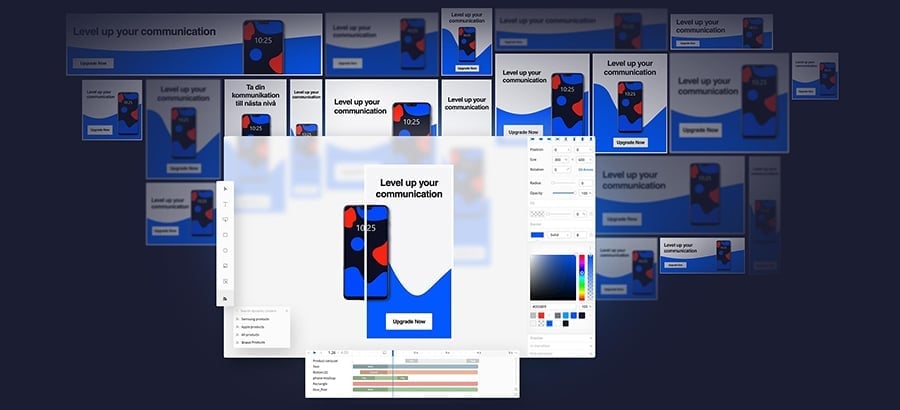As we approach 2024, one of the key topics concerning online advertising and data privacy is the phasing out of third-party cookies., As technology and regulations continue to shape the digital world, businesses and marketers are forced to rethink their strategies for tracking user behaviour.
In this article, we will explore how to deal with a cookieless future, adapt to a cookieless world, examine the future of cookieless tracking, and address the challenges that lie ahead.
How Do You Deal with a Cookieless Future?
Dealing with a cookieless future requires a strategic shift in the way businesses collect and utilise data. Here are some key steps to consider:
- Focus on First-Party Data
With the decline of third-party cookies, businesses should place more emphasis on gathering and utilising first-party data. First-party data refers to information collected directly from website visitors, subscribers, and customers. This data is considered more reliable and trustworthy because users willingly provide it. Building trust and providing value in exchange for data is essential.
According to a study by analytics and measurement platform; DoubleVerify, Nearly half (49.0%) of advertisers worldwide believe that activating their first-party data is the most promising solution to cookie deprecation.
This is because first-party data allows for more personalised marketing efforts, resulting in higher user satisfaction and conversion rates.
- Implement Contextual Advertising
Contextual advertising involves targeting users based on the content they are currently consuming, rather than relying on user profiles or tracking cookies. This approach respects user privacy while still delivering relevant ads.
Contextual advertising considers the context in which a user interacts with content, ensuring that ads are aligned with the user's immediate interests. Users are more receptive to ads that align with their current interests, making contextual advertising an effective and user-friendly alternative. Statistics show that 65% of consumers are more likely to buy from online ads relevant to the web page they are currently viewing.
- Leverage Alternative Tracking Technologies
In the absence of third-party cookies, it's crucial to explore alternative tracking technologies. Two notable options are Universal ID solutions and email-based identifiers. These methods can help bridge the gap left by third-party cookies and enable businesses to continue tracking and targeting users effectively.
Universal IDs offer a way to maintain user profiles and deliver personalised experiences without relying on traditional tracking methods.
How Do You Adapt to a Cookieless World?
Adapting to a cookieless world requires you to take a proactive approach, here are some vital things to take into account.
- Data Privacy Compliance
Ensuring compliance with data privacy regulations like GDPR (General Data Protection Regulation) and CCPA (California Consumer Privacy Act) is paramount. These regulations impose strict requirements on how businesses collect, store, and use user data. Non-compliance can result in significant fines and damage to a company's reputation. Transparency and user consent are key components of compliance.
Non-compliance with GDPR can result in fines of up to €20 million or 4% of a company's global annual revenue, whichever is higher. To avoid such penalties, businesses must prioritise data privacy and establish clear procedures for obtaining and managing user consent.
- Invest in AI and Machine Learning
AI and machine learning algorithms can play a pivotal role in a cookieless world. These technologies can analyse available data more effectively and make predictions based on user behaviour, even without relying heavily on cookies. By leveraging AI, businesses can continue to understand user preferences and deliver relevant content and recommendations.
In a study carried out by eMarketer, 57% of U.S. adults said they were comfortable with AI targeting being used to target advertising towards them.
Beyond this, AI-driven insights empower businesses to make data-driven decisions and enhance user experiences in a cookieless environment.
- Diversify Your Marketing Mix
To adapt successfully, it's essential to diversify your marketing strategy beyond digital advertising. While digital advertising has traditionally relied on cookies for targeting, there are numerous other channels and tactics that do not depend on cookies.
Content marketing, social media marketing, influencer marketing, and email marketing are all viable alternatives. Content marketing generates three times as many leads as traditional outbound marketing but costs 62% less, making it a valuable addition to your strategy. By producing high-quality, informative content, businesses can attract and engage users without relying on tracking cookies.
The Future of Cookieless Tracking
The future of cookieless tracking is marked by innovation and adaptation, it is important to get an understanding of the technology available to create more personalised experiences for your audience.
- Contextual Targeting Advancements
As contextual targeting becomes more sophisticated, advertisers will have access to improved methods of understanding and targeting users based on the content they engage with. Advanced algorithms will analyse the content context, user behaviour, and historical data to deliver highly relevant advertisements.
The contextual targeting industry is projected to reach $562.1 billion by 2030 and to achieve this, there is no doubt that the algorithms driving this technology will also advance. This will result in a more positive user experience and higher engagement rates with contextual ads.
- Privacy-Enhancing Technologies
Expect to see the development of privacy-enhancing technologies that enable data sharing without compromising user privacy. Techniques like federated learning and differential privacy are gaining traction. These approaches allow businesses to glean valuable insights from user data while respecting privacy rights. These technologies will enable users to confidently share their data in the knowledge that it will remain private whilst contributing to machine learning models.
- Collaboration and Industry Standards
The advertising industry is working on defining new standards and guidelines for tracking and user data management in a cookieless world. Collaborative efforts are key to ensuring a smooth transition. Industry players are actively participating in discussions and working groups to establish best practices and ensure interoperability across platforms.
Industry-wide collaboration has resulted in the development of standardised data-sharing protocols, enhancing data interoperability. These protocols will facilitate data sharing while maintaining user privacy.
Challenges of the Cookieless Future
While the cookieless future brings opportunities, it also presents challenges that marketers need to be aware of.
- Loss of Tracking Precision
Without third-party cookies, tracking user behaviour becomes less precise, making it more challenging to deliver highly targeted advertising. Advertisers will need to rely on contextual cues and user-provided information to approximate user interests accurately.
Studies show that personalised ads are 71% more likely to be clicked compared to non-personalised ads, highlighting the importance of precision in targeting. Advertisers will need to find innovative ways to achieve similar levels of personalisation without invasive tracking.
- Consent Management
Managing user consent for data collection becomes complex, and businesses must invest in user-friendly consent management solutions. Consent interfaces should be transparent, easy to understand, and give users control over their data.
Research has demonstrated that the effectiveness of consent interfaces is heavily influenced by their simplicity and navigability. When consumers are presented with interfaces that are straightforward and easy to understand, they are more likely to give their consent. This finding highlights a crucial strategy for businesses: prioritising the ease with which customers can comprehend and navigate their options in consent interfaces. By ensuring clarity and ease of use, businesses can significantly increase the likelihood of obtaining customer consent.
- Data Fragmentation
Businesses often utilise a variety of data sources to engage with their customers. Whether it be CRM tools or insights from ad platforms there are an endless amount of areas that could give you an understanding of the different types of people engaging with your business and how they want to engage. With data spread across various platforms and channels, data consolidation and integration become vital for a unified customer view. Fragmented data can lead to missed opportunities and incomplete insights. Businesses must invest in data integration solutions to unify their view of the customers.
Conclusion: Navigating the Cookieless Future
As we venture into the cookieless future, businesses must embrace change, adapt, and evolve their strategies for tracking user behaviour and delivering personalised experiences. By focusing on first-party data, contextual advertising, and alternative tracking technologies, companies can continue to engage their audiences effectively while respecting user privacy and compliance with data regulations.
Investing in AI and diversifying marketing efforts beyond digital advertising opens new avenues for understanding user preferences and reaching target audiences. The future of cookieless tracking promises advancements in contextual targeting and the development of privacy-preserving technologies, ensuring that users receive relevant content without compromising their privacy.
However, challenges such as the loss of tracking precision, consent management complexities, and data fragmentation must be addressed with innovative solutions. Building user trust through transparent consent interfaces and investing in data integration will be pivotal in overcoming these obstacles.
In this cookieless era, success hinges on adaptability, collaboration, and staying informed about industry developments. Businesses that prioritise user privacy, deliver valuable content, and leverage emerging technologies will not only navigate the cookieless future but also thrive in it.
The cookieless future represents an opportunity for businesses to foster stronger relationships with their audiences while respecting privacy and data ethics. By implementing the strategies and insights discussed in this article, your business can be well-prepared to thrive in this evolving digital landscape.
Want more insights to develop your marketing strategy? Sign up for Bannerflow’s monthly newsletter today.







